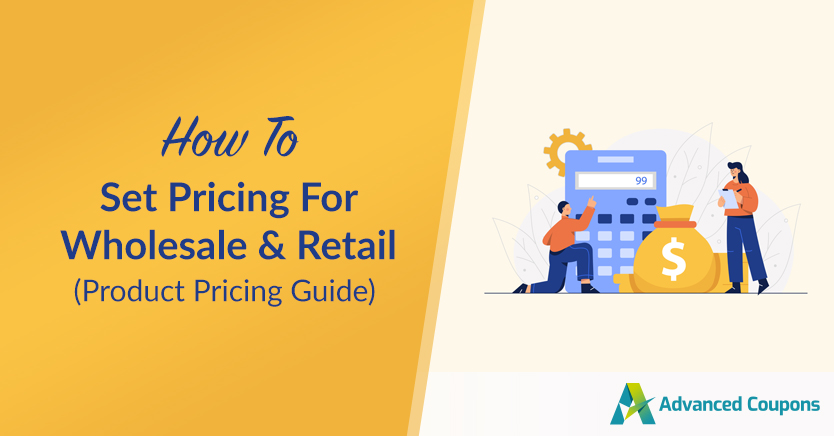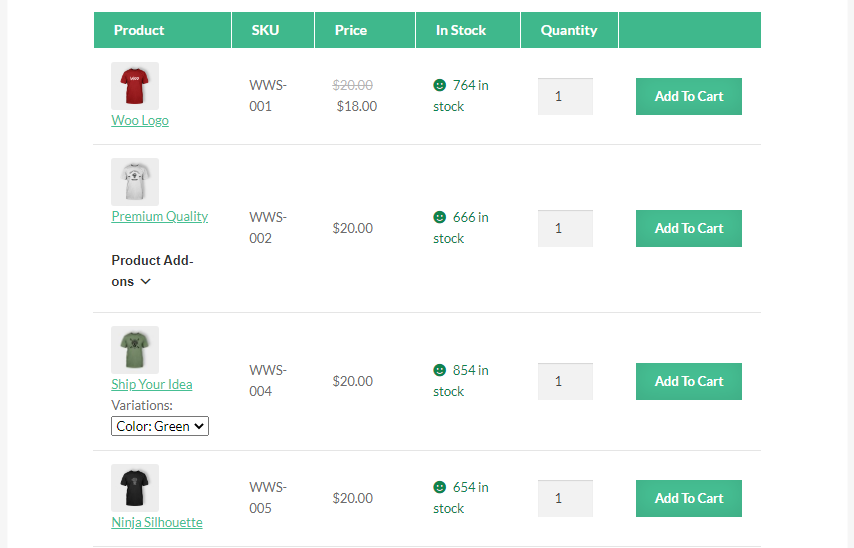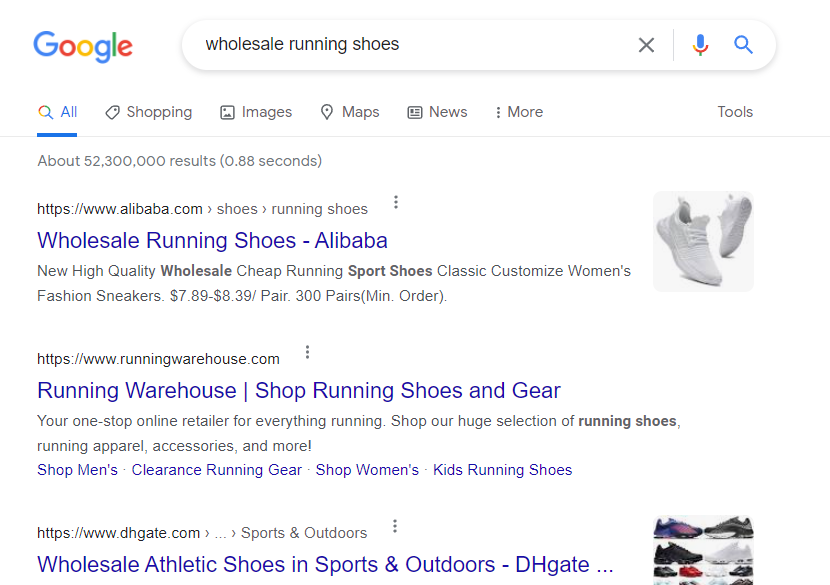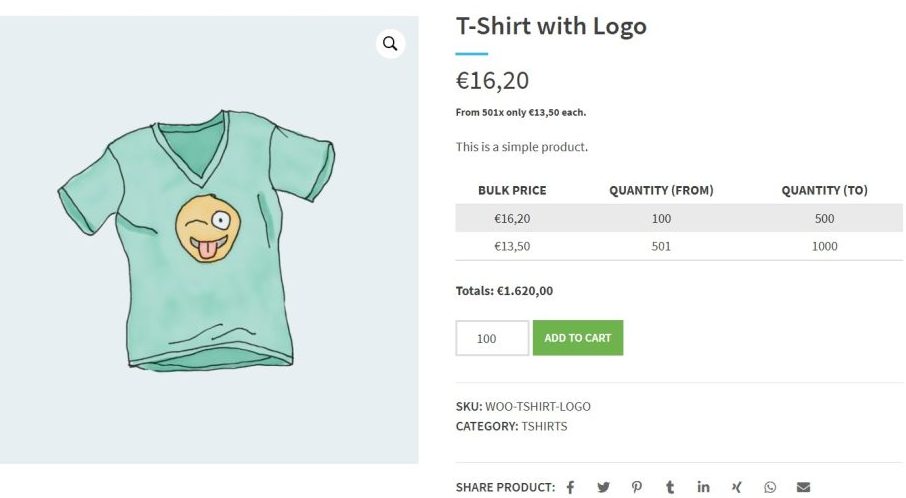
Calculating pricing for wholesale vs retail is always a challenge. If you sell both retail and wholesale, you’ll need different sets of prices for each customer base and for every product. Learning how to calculate those prices can mean the difference between cultivating a loyal customer base or struggling to make sales.
In most cases, you’ll be able to rely on a wholesale vs retail price formula. However, before you put any formula to work, you need to understand how you arrive at those numbers. That way, you’ll know when to rely on formulas and when to calculate prices manually.
For this article, we’re going to talk about what wholesale prices are and discuss wholesale vs retail price formulas. We’ll show you how to arrive at the ideal wholesale price starting from retail numbers.
What Is Wholesale Price?
Selling products unit by unit works very differently than doing business in bulk. With retail, you need bigger margins to justify each sale. If you have a product that costs you $X to procure or build, you also need to consider:
- Administrative costs
- How much it may cost to ship
- Storage costs
- Package pricing
Customers don’t see those hidden costs and they’re the reason why we sell products at a markup. That’s not even considering that you also need to make a profit. Otherwise, there’s no point in running an e-commerce operation.
With e-commerce, there’s always a race to the bottom in terms of prices. Customers can easily find the same product in other stores with only a few clicks, so prices need to be in line with what your competitors offer.
The equation changes when it comes to wholesale operations because you sell products in bulk. That means you can afford lower margins per product since you’re selling a whole lot of them with each order.
Whereas a standard retail order for one or two products might net you a small profit, a wholesale order can bring in much more money in an instant. That’s why wholesale prices tend to be lower across the board – customers expect a better deal because they’re buying in bulk and both parties benefit.
Note: With Wholesale Suite, you can set retail and wholesale prices for each product in your WooCommerce store.
You can even create multiple levels of wholesale prices, each for a different customer role!
If you want a detailed breakdown on how to calculate your wholesale price properly, we recommend reading The Complete Guide To Wholesale Price. This guide walks you through everything you need to know about setting wholesale prices. 👉

Wholesale Price vs Retail Price: What’s The Difference?
Wholesale prices tend to be lower across the board than if you buy retail. That’s because when you sell products in bulk, you can afford lower profit margins for each item. The sales in numbers should more than makeup for reduced prices.
It’s also worth noting that retail and wholesale businesses operate in entirely different manners. If you have an online retailer, you’re going to spend a lot more time attracting customers, improving their shopping experience, and navigating support.
Wholesale operations tend to be a lot more streamlined. You’re moving products from a manufacturer directly to distribution. In many cases, you’re the link between manufacturers and retailers.
Those retailers need products in bulk to operate and you help them procure items from the right sources. Typically, retailers will shop around until they find the lowest prices or the most reliable wholesale distributors. Since there’s an extra step involved, prices will be higher for retail customers.
You still need to care about customer experience, but usually, clients will find you and they’ll be more interested in prices than in how your store looks. Here’s an example of a wholesale order form built with WooCommerce and Wholesale Suite:
A great wholesale store is all about providing customers with the information they need to make bulk purchases. You can choose to display how many products you have left, show SKU codes, and enable customers to add products to their carts without opening new pages.
How To Calculate Wholesale Price From Retail Price
If you’re already selling retail, you know how much regular customers are willing to pay for a product. However, that information usually doesn’t translate well to wholesale customers. Simply reducing your profit margins blindly means that you may be leaving money on the table, so here’s what you need to do.
Step 1. Research your wholesale competitors
With any e-commerce operation, your first order of business should always be to check out what your competitors are doing. When calculating wholesale price, you want to find other similar distributors and see what their numbers look like.
Some wholesale distributors might only be available via recommendation. However, a quick Google search should yield some great wholesale price list examples:
You’ll probably see a lot of variation in prices. However, numbers should start to average out the more wholesale distributors you analyze. Ideally, you’ll keep a spreadsheet that includes prices for each distributor focusing on the type of products that you plan to sell.
Some wholesale stores might be able to offer much lower prices than you’d expect. Usually, that points towards them working with cheaper manufacturers. Although lower prices will help you attract customers, there’s also the matter of quality.
To be successful, you need to find manufacturers that strike the right balance between quality and price. That way, you’ll get repeat business and customers should be happy with your wholesale prices.
Step 2. Calculate the costs of production
The basic formula for setting any type of price is that products should sell for more than they cost you. Once you have an idea of how much competitors are charging for similar products, you can compare those numbers with your production costs.
Unless you are directly in manufacturing, you’ll need to buy products from the people that make them. They have their own costs and for each order, you also need to consider:
- Shipping costs
- Administrative and processing costs for receiving products
- Rates of failure or defective products
Once you know exactly how much a product costs you, you can start to think about profit margins. Ideally, they should be somewhat in line with what your competitors are charging. At least, that is if you’re selling products of similar quality.
You can decide to go with lower prices than your competitors if you want to attract more customers. However, that means you’ll be working with lower profit margins.
On the other end of the spectrum, higher prices might not play well with customers unless you’re selling unique products or your quality is much higher.
Step 3. Analyze retail prices
Wholesale prices don’t exist in a vacuum. If you’re ever in doubt as to your prices, you can use the following three datasets for reference:
- Basic production costs for each product
- How much your wholesale competitors charge
- How much retail stores are charging for the same products
Unless you’re missing something, there should be a gap between both sets of prices.
Ideally, you want to charge wholesale prices that are somewhat in line with the competition. If you choose to go higher, you need to consider that you may be eating into the profit margins of retailers, which can make you a less attractive option.
Analyzing retail operations works much the same as with wholesalers. To do this, you’ll need to look up stores that are selling the same products as you and compile lists of numbers.
For reference’s sake, it helps to put wholesale and retail numbers side by side using a spreadsheet.
That way, you’ll be able to appreciate the difference in margins between both types of businesses for your specific niche. If you are interested, Wholesale Suite also has a free wholesale calculator you can use to make it easier to compute wholesale prices.
2 Types of Wholesale vs Retail Price Formulas
So far, we’ve focused on showing you what elements go into considering wholesale prices vs retail prices. Now, it’s time to put that information to work using basic formulas that you can apply to your own business.
1. Absorption Pricing Formula
This is the most basic type of wholesale price formula that you can apply to your business. It’s called “absorption” pricing because the final number absorbs both your production costs and profit margins. That formula should look something like this:
Production costs + Profit Margin = Final Wholesale Price
This formula assumes that you have set production costs and that you know big of a profit margin you want to set. When using absorption pricing, it’s important that you don’t set your profit margin in a vacuum. You need to know how much-competing wholesalers are charging for similar products since that tells you how much customers are willing to pay.
If that final wholesale price includes a margin that you can live with, then you’re good to go. You’ll only need to modify the formula if your production costs change or if the market moves towards more expensive or cheaper products. That’s called demand and it comes into play with the next formula.
2. Calculating wholesale prices based on demand
Using absorption pricing formulas means that you’ll always make a profit off wholesale orders. However, that type of formula leaves demand out of the equation, which is a huge mistake.
To give you an example – if you sell seasonal products, the prices that customers might be willing to pay will shift over time. If you sell winter jackets, sales will usually peak right before and during the coldest months. Outside of that period, customers will be willing to pay much less for the same products.

Calculating product demand can be a challenge. Ideally, you’ll keep track of wholesale and retail prices for competitors across long periods of time.
That will give you a great idea of how prices shift depending on the season.
If you fail to adjust your prices based on demand, it’ll translate to fewer sales over time. Demand for most products shifts, so you’ll also want to keep a history of your own prices for reference’s sake.
Common Questions About Pricing for Wholesale
By now, you have a good idea of how to calculate wholesale prices for your store.
However, you may still have some questions left about wholesale prices vs retail prices. The following sections will answer them.
What is the “minimum advertised price”?
It’s a common practice for wholesale operations to suggest pricing for retail customers. If you sell a product at $X price, you can suggest that retailers sell it for $Y. Typically, that number will be in line with what other retailers are charging.
This practice is popular because it makes life easier for retailers. However, some of your customers might prefer to lower prices drastically in order to drive out the competition. That can affect your wholesale store as other customers might run out of business.
One way to protect your bottom line is to require wholesale customers to agree to a minimum advertised price. That’s a price below which retailers can’t go. The price should leave some room for promotions and discounts on the retail end of things, but not so much so that it’ll undercut industry standards.
Is the wholesale price half of the retail?
When calculating wholesale prices, you need to take a variety of factors into account. Those include production costs, operation costs on your side, and a decent profit margin.
If you simply take the wholesale price and cut it in half, you run the risk of arriving at a price that doesn’t cover your own costs. Even if the price doesn’t look bad, you might be leaving money off the table by not factoring in the prices of competing wholesalers
How to calculate the retail price?
If you run a wholesale operation and you want to get into retail, you’ll be happy to know that you can sell products at higher margins. Typically, the best way to find out how much retail customers are willing to pay is to research stores that sell the same products as you.
Take their prices as a reference when calculating your own profit margin. While you’re calculating retail price, don’t forget to factor in demand.
Conclusion
If you use WooCommerce, you can run a store that offers both retail and wholesale pricing. Wholesale Suite enables you to set wholesale prices for each product in your store. What’s more, you can create wholesale-only sections and products that only bulk buyers will be able to access.
In this article, we’ve explored the idea of wholesale price and how it differs from retail prices. Now, let’s take a look at three simple steps to figure out the wholesale price based on the retail price:
We also shared two types of wholesale and retail price formula:
Finally, we answered some of the common questions about pricing for wholesale:
- What is the “minimum advertised price”?
- Is the wholesale price half of the retail?
- How to calculate the retail price?
Do you have any questions about how to set pricing for wholesale and retail? Let’s talk about them!








